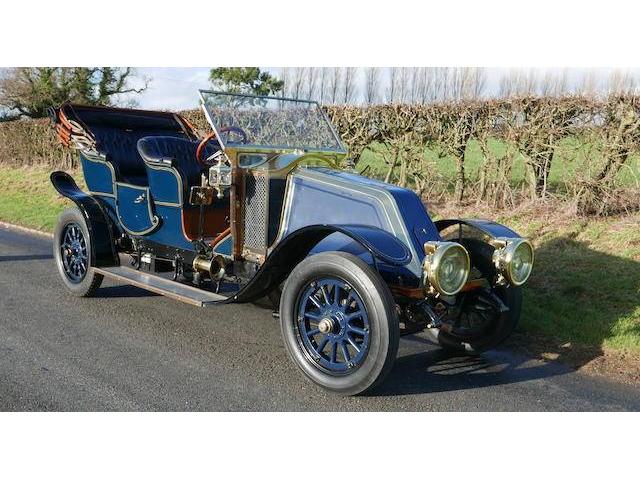1909 Renault Type BH 50hp 'Roi des Belges'
- Brand: Renault
1909 Renault Type BH 50hp 'Roi des Belges' Coachwork by John Mitchell, Biggleswade
In 1908 Louis Renault introduced his first six-cylinder car: the 9.5-litre Type AR, which was replaced in 1909 by a second six-cylinder model: the Type BH.
It is considered that these six-cylinder models were Louis Renault's response to the Rolls-Royce Silver Ghost; certainly in performance terms the two are equally matched as both are capable of exceeding 70mph (this BH has been followed at 85mph in ideal conditions).
Early six-cylinder Renaults are extremely rare. The Veteran Car Club of GB holds records of over 240 surviving pre-1919 Renaults, of which only five are six-cylinder models. Two are 22hp types dating from 1913 and 1914 respectively, while two others are 40hp cars, again dating from 1913/1914. This 50hp BH is believed the only surviving example this side of the Atlantic Ocean. It is believed that perhaps one AR and one BH reside in the USA, both dating from 1909; the American BH is un-restored and minus any bodywork, while some engine components are missing.
The Type BH presented here was delivered new in mid-1909 to a wealthy Californian via the official American West Coast Renault Agency. It is possible that he was involved on the film industry, because by the early 1920s the car was being used by film studios and is recorded as having appeared in a number of 'silent movies', with different bodies on each occasion. Certainly by 1925 the car was owned by Eujean Lajuni of Fairoaks Garage, Pasadena, and there is photographic evidence that it was then carrying the 1915 Pierce Arrow limousine body, later domed wings, and later electric headlamps. That same body remained on the Renault until 1984/85.
Lajuni was a garage proprietor specialising in Renault vehicles, who operated a taxi service and supplied cars to the film industry. It has not been possible to establish when he first owned this car, but it is understood that he used it daily until 1947. It was then owned by Dr George Schaeffer of the Antique Automobile Club of America.
In 1960, the Renault was purchased by Bill Harrah and immediately placed in his 'Reserve Collection'. In 1968, it was purchased by Alan Clendenen, the Harrah Museum's curator at that time (he wanted the Pierce Arrow body to complete a vehicle he was restoring).
In 1985, the Renault rolling chassis was purchased by the current vendor via Stephen Langton and The Keller Carriage Company of California. Once the BH had arrived in chassis form, it was steam-cleaned and made to run. The car was tested on private roads, which proved that everything worked, following which it was totally dismantled. Once the car was in pieces, it immediately became obvious that it had covered a significant mileage: such findings reinforcing the aforementioned history.
The restoration necessitated the replacement of every nut, bolt, and rivet in the chassis frame itself, while every bearing and ball race was replaced also. The original crankshaft was fractured, so a new stronger crankshaft plus connecting rods was manufactured by Phoenix Crankshafts of Slough, Berkshire. Subsequently, new cylinder blocks, pistons, valves, and valve springs were made by Crosthwaite & Gardiner, the originals being beyond repair.
A modified oiling system, pressure fed, was installed because it was evident that the original drip-feed design was woefully inadequate. The magneto was fully rebuilt and the lights converted to 12-volt operation, though it should be noted that they are not wired up. A replacement period-correct rear axle has been installed, and the transmission system has been fitted with an overdrive for more relaxed cruising.
The replica 'Roi des Belges' body was built by John Mitchell and then fully upholstered by Peter Phillips (both past presidents of the VCC of GB). The total restoration took 12 years to complete and cost £80,000 (in 1985 to 1997 prices).
Descriptions & pictures by bonhams & flickr & rickcarey & les-renault-d-avant-guerre & notfu
| Specification | |
| Production Start | 1909 |
| Country of origin | France |





























